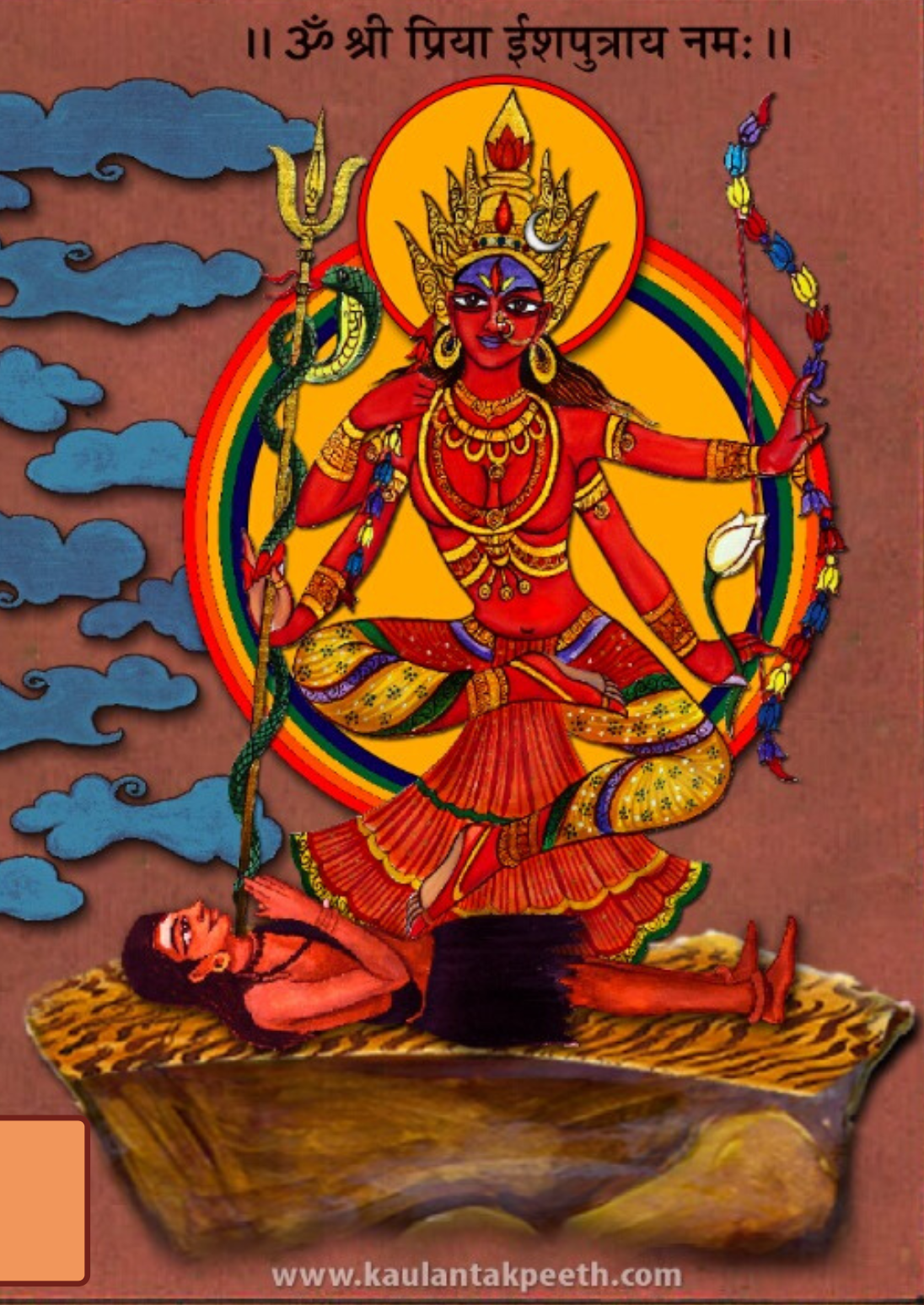Regarding Knowledge
The knowledge systems (Vidya) are not primarily encyclopedic, and cannot be indexed based on Shastra (शास्त्र) alone.
Scholarly research
There is a famous answer by Swami Lakshmanjoo, when an American student asked: "Where can I study in India?" -- Lakshmanjoo answered that it is difficult to find the right place and the right teacher in India. Many "get lost in the mud".
Scholarly research is essential to understand spiritual teachings. But it is also essential to know, that Shastra isn't enough. The intention of scholarly research isn't to proof or to acknowledge specific spiritual aspects. It is to support the authentic traditions, and give more meaning to them.
Kaulantak Peeth
Kaulantak Peeth is located in Kullu, which was named Kulluta.Kuluta in eras before.
The word ‘Kullu’ is speculated to have been derived from the word ‘Kuluta’ which was found inscribed on a coin from the first century A.D. The first king (Raja) mentioned in historical record is Virayasa whose name figures on that coin as ‘Virayasa, King of Kuluta’. The Chinese pilgrim, Hiuen Tsang, is believed to have described the modern Kullu as Kiu-lu-to situated at 117 miles to the north-east of Jalandhar. The tract has also been referred to as ‘Kulantapitha’, which translates to ‘the territory which marks the end of Kula i.e. the socio-religious system of the mainland’ or ‘the end of the habitable world’.
Source: https://hpkullu.nic.in/history/
Kaulantak Peeth teaches Siddha Dharm via the International Kaulantak Siddha Vidya Peeth.Peeth organization.
Siddha Dharm is one of the progenitors of the Tibetan Buddhism (Vajrayana), which has been inspired by Indian MahaSiddhas. Among them, Padmasambhava or Mandarava.
The word "Peeth" is sometimes written as Pith (related to Pithas). Shakti Peethas are related to the worship of the Goddess Sati, who is considered an incarnation of Adi Shakti (the primordial cosmic energy).
Kaulantak Peeth is a pilgrimage placesite of the Himalayan Siddhas, and there are temples dedicated to Goddess Kurukulla. An ancient name for Kaulantak Peeth is also Kulant Peeth. Kulant, related to KullaKulle and Kullu.
The traditions of the Himalayan Siddhas include:
- Desaj Parampara: understanding the tradition of regional lineage (of Kullu)
- Guru-Shishya Parampara: the Guru (Nath) is Kaulantak Nath (Mahasiddha Ishaputra)
- Dev Parampara: Deva traditions (Sanatama Dharm,
thean older name for Hindu Dharma)
Kurukulle
In the West, not much is known about Goddess Kurukulla. Another name for Devi may be the Red Tara, a form of the Mahavidya. The worship of Devi is within the practices of Shakta traditions.
Devi holds many secrets.
The knowledge available in the West, related to Yoga or traditional Tantra arts, is sparse. That is changing slowly,slowly. butThe as it is with authentic knowledge and ancient traditions: the translationsefforts must be made by people who are profientcapable enough.
Myth and truth
- What is the truth?
Regarding knowledge, the intention of these pages is not to proclaim "authority". Can there be authority over myth and truth, or is myth how truth escapes all such attempts?
During Sadhana one might come to a new Sankalpa (सङ्कल्प), to see things from a new perspective. Often Sadhakas use forms of art to express what has become their experience. To them and their community, this art can represent truth. To others, it remains a myth.
Many of the divine teachings are not written on paper because paper became available later in India. Some teachings are written on plates of different materials, on small pieces of wood or parchment. In rare cases did the Siddhas in the Himalayas have access to specific materials, but there are records made of copper plates, for example. In Bharat at that time, different languages were spoken: Telugu, Sanskrit, local languages, but some scriptures use specific symbols not found elsewhere.
One should be respectful regarding these authentic and ancient traditions. The Siddhas have made every possible effort to protect their tradition over millennia. For very good reasons: Siddha Dharm is a complete "art". And art, that can aid a Sadhak to attain completion.
Namo Adesh
Om Namah Shivay

